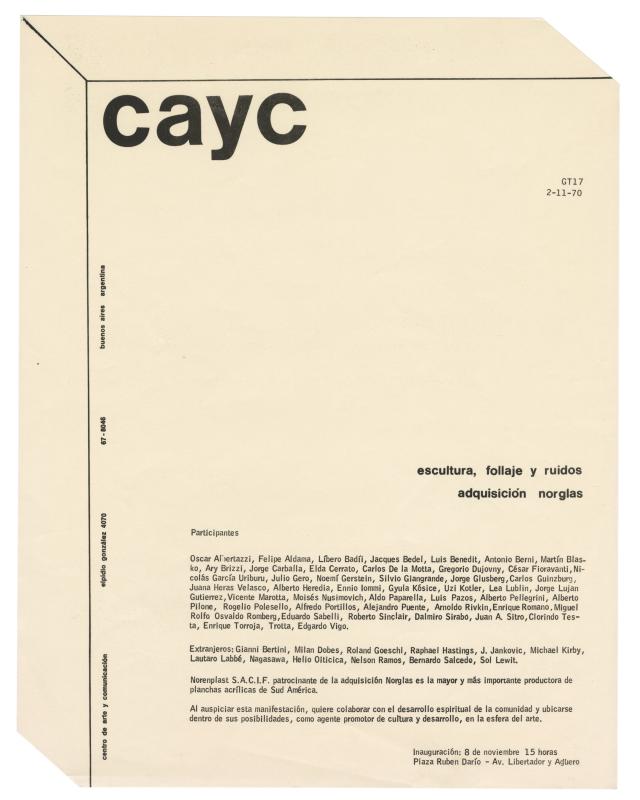Ever since it was founded, the CAYC (Centro de Arte y Comunicación), helmed by the cultural promoter, artist, and businessman Jorge Glusberg, was intended as an interdisciplinary space where an experimental art movement could flourish. The establishment of collaborative networks connecting local and international artists and critics played an important role in this process. The exhibitions shone a light on these exchanges, in which overviews of trends or individual artists provided an introduction to the innovations of international contemporary art and made Argentine and Latin American artists better known on the global scene.
In the late 1960s and early 1970s, in Buenos Aires, a debate took place among those who questioned the artistic nature of a photographic image and the possibilities for experimentation that the medium provided. As a discipline that combined artistic exploration, technological development, and the transmission of information, it was something the CAYC had been interested in ever since it was founded. During the early 1970s, many of the center’s activities related to this medium were organized together with Fotografía Universal, a specialized magazine published in Buenos Aires. Edited by Miguel Ángel Otero (b. 1945)—who introduced a semiotic approach to the interpretation of photography to Argentina—the magazine provided space for the debate about the scope of the medium, its future, and its acknowledgement at an institutional level. (Daniel Merle, “Procesos forzados. Experimentación técnica y fotografía documental en Argentina entre 1967 y 1972,” unpublished.) The alliance between Otero and the CAYC arose from a shared interest in a kind of photography that could present a politically inflected view of the country’s social and political situation.
The competition was sponsored by Hasselblad, the Swedish photographic accessories company, with support from Sainte Croix S.A., whose interests included finance, real estate, agriculture, and livestock. A specialized jury was appointed to judge the submissions. Winners were presented with works by artists associated with the CAYC as part of their prize. Exhibitions and competitions of this type frequently enjoyed the support of companies engaged in the production and marketing of industrial products. For example, the involvement of Noren Plast S.A. (a supplier of plastic materials) in the exhibition Escultura, follaje y ruidos in 1970 (GT-08; doc. no. 1477957, GT-17; and doc. no. 1477959) and the competition organized by the Aurora home appliance company (GT- 41, 42, 47; doc nos. pending) in 1971. Glusberg had connections to the industrial sector through his own company, Modulor S.A., which sold lighting fixtures.


